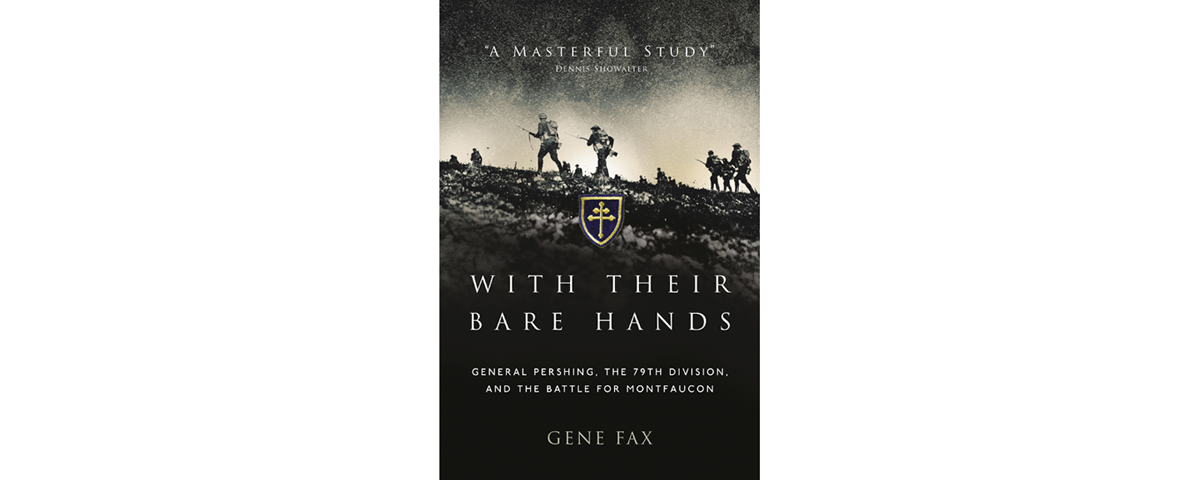With Their Bare Hands: General Pershing, the 79th Division and the Battle for Montfaucon, by Gene Fax, Osprey Publishing, Oxford, U.K., 2017, $32
At the outset of World War I the U.S. 79th Infantry Division was a military embarrassment—composed of draftees organized in anonymously numbered units, hastily trained in tactics more appropriate to the Civil War and led by junior officers fresh from civilian life and seniors with only hazy ideas of their suddenly expanded responsibilities. Yet in 1918, when Allied commanders laid plans for the Meuse-Argonne Offensive, they handed these virgin soldiers the most critical assignment. Montfaucon, which boasted one of the strongest defensive systems on the Western Front, was the key to the German position. The 79th’s orders were to capture it—in a single day. The outcome of those preposterous orders proved grimly predictable.
At all ranks the men of the 79th were willing enough. The problem was they did not know how to do what they’d been ordered to do. The author vividly describes the accompanying indecision, pervasive poor planning, inconsistency and befuddlement, resulting in bungled staff work, muddled chains of command, failed communications, misdirected artillery support and frontal attacks made over poor terrain and virtually at random. Gridlocked rear areas meant casualties could not be evacuated nor supplies brought forward. Late autumn rains, diarrhea and influenza, hunger and fatigue all took an increasing toll.
Fax makes a convincing case that the 79th’s initial failure at Montfaucon owed less to the division’s own shortcomings than to the refusal—from egoism and ambition—of a neighboring corps commander to support the division with a flank attack. Regardless, the division became a scapegoat for the slow, costly and confused progress of the entire offensive. The United States fought World War I with an army created from nothing and organized along industrial lines—a rigid, top-down command structure that left precious little room for initiative. Against the battle-tested German enemy the American Expeditionary Forces paid for in blood what it decidedly lacked in skill. The Meuse-Argonne retains the record for the longest casualty list of any battle in U.S. history.
Of course, that’s really only half the story. Once out of the line the 79th evaluated its mistakes, reconsidered its methods and within a month performed as well as any of its counterparts. Its prompt recovery is a tribute to the high learning curve of American soldiers once blooded in combat.
—Dennis Showalter





